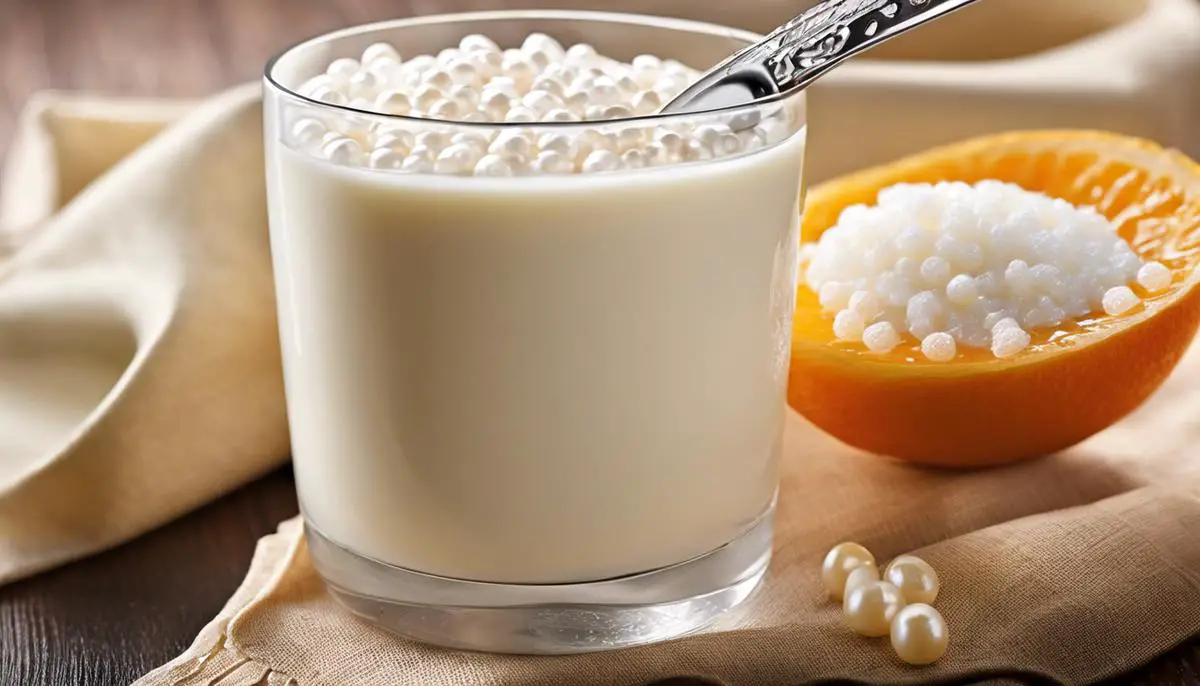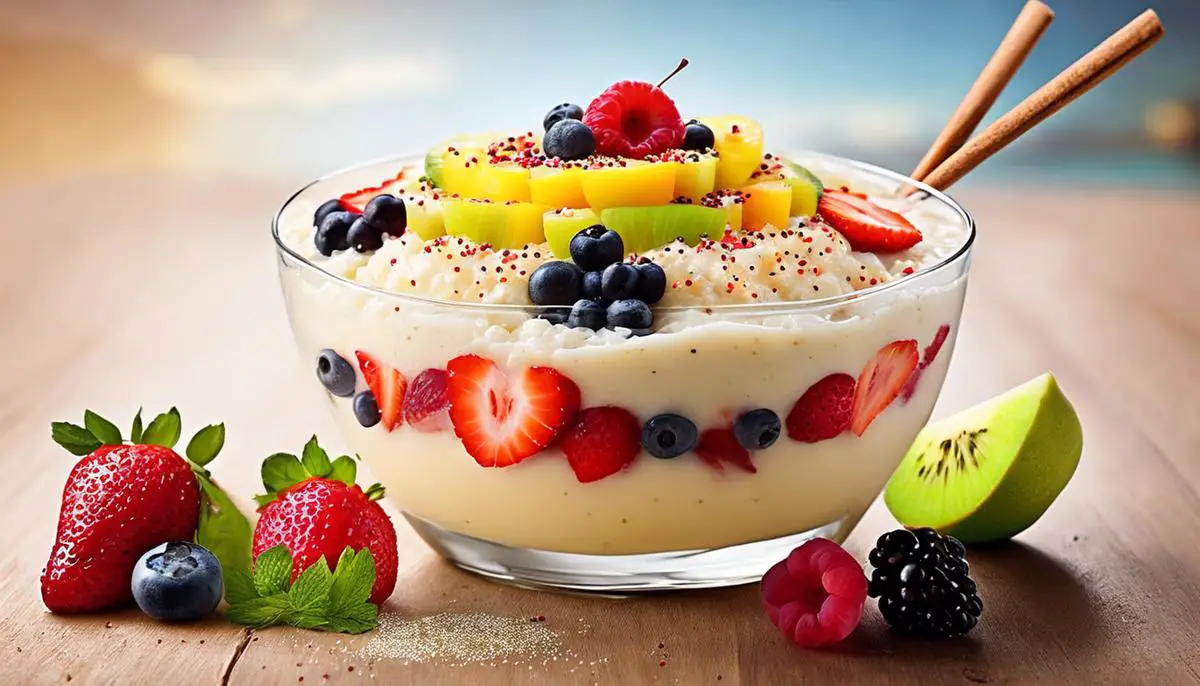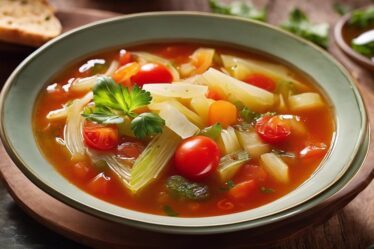
Imagine a world where dessert meets comfort in a symphony of smooth textures and delightful sweetness – welcome to the realm of tapioca pudding. This classic treat, cherished by generations, begins its journey with the starch extracted from the cassava root, known as tapioca. This primary ingredient transforms into the pearls that give the pudding its distinctive consistency. Alongside this star component, a dance of whole or alternative milks melds with a range of sweeteners, from granulated sugar to forest-harvested honey, to create a luscious base. Embellishments such as vanilla extract, a dash of salt, or a sprinkle of cinnamon contribute to the heartwarming complexity of this dish. Uncovering the elements that comprise tapioca pudding not only tantalizes the taste buds but also reveals a fascinating culinary narrative.
Ingredients in Tapioca Pudding
Ah, tapioca pudding – it’s that creamy, comforting dessert that has a way of transporting us back to simpler times, a real throwback to the coziness of sitting at grandma’s kitchen table. But have you ever paused, mid-spoonful, and wondered just what those little pearls in your pudding actually are? Let’s break it down, shall we?
Tapioca comes from the cassava plant, a root originally found in South America, but now grown in many tropical areas. The starch extracted from cassava is what gives us those delightful little pearls. When they’re cooked, they become wonderfully chewy and gelatinous, providing not just a unique texture but also a neutral canvas ready to absorb all the scrumptious flavors we mix into the pudding, like vanilla or cinnamon. Now, let’s talk about the creamy aspect of this beloved dessert. A base of milk or cream, sometimes even coconut milk for a twist, is gently heated and sweetened with a dash of sugar – not too much, just right.
In our homespun tapioca pudding, the magic happens when we combine heat, those starchy pearls, and our liquid base. As they simmer together, the pearls puff up into sumptuous little pillows, thickening the mix to that signature pudding consistency we all know and adore. At the heart of it, it’s not just flour or sugar that makes this desert a staple; it’s those little, almost mystical tapioca pearls that are the true stars of the show. Plus, it’s a versatile treat; serve it warm and it’ll wrap you up like a cozy blanket on a brisk evening, or chill it and let it refresh you on a warm afternoon. It’s the little touches, like a final flourish of finely grated chocolate or a sprinkle of coconut shavings, that turn this straightforward dish into an instant crowd-pleaser.
Whether it’s for an everyday surprise dessert or a special finishing touch on a family dinner, digging into your homemade tapioca pudding is like a hug in a bowl. Only, this hug is dotted with delightful squish and wrapped in a velvety sweetness that keeps you coming back for one more comforting spoonful after another. Now you know what’s inside, ready to enjoy every last bite!

Nutritional Information
When considering the health aspect of tapioca pudding, it’s key to peel back the layers of its creamy delight to examine the nutritional content. Tapioca, those little pearls swimming in the pudding, originated from the cassava root, which is naturally low in protein and other nutrients. But, let’s be clear: if you’re reaching for a spoonful of this dessert, you’re not just scooping up cassava-derived pearls. The pudding we cozy up with usually has milk, sugar, and sometimes eggs, which contribute to the pudding’s overall nutritional profile.
Now, down to brass tacks: milk can offer a dose of calcium and protein, while eggs can boost the intake of protein and vitamins. Sugar, however, does tip the scales, and not in a good way. It adds calories without the bonus of nutrients. The verdict? Tapioca pudding could stride into the “healthier” dessert territory if the sugar is kept in check and if served as part of a balanced diet. Think of it like your indulgent family movie night—lovely in moderation but not the everyday norm.
Next, let’s chat toppings and tweaks. To give tapioca pudding a healthier twist, consider dialing back the sugar and letting the natural sweetness of toppings do the talking. Fresh fruit slices, a sprinkle of cinnamon, or a dollop of Greek yogurt can turn this classic into a more nutrient-rich affair. This isn’t just about substitution; it’s about transformation—keeping the soul of the treat while putting on a fresh, health-conscious face. The goal is to retain that snuggly, comforting sensation without piling on unnecessary sugars or fats. It’s giving that old-school dessert a sprightly jog around the block, breathing new life into it with clever, wholesome choices. Admittedly, this isn’t about creating a ‘superfood’ but rather giving a nod to health within the landscape of life’s sweet, spoonable pleasures.

Within the humble bowl of tapioca pudding lies not just a dessert but a tapestry of ingredients that can narrate family histories and cultural traditions. Each spoonful is a reminder of the simple joy found in well-crafted foods. By dissecting the components and understanding their nutritional impact, families can make informed decisions that resonate with their health objectives. Tapioca pudding stands as a versatile confectionery that, with a bit of knowledge and creativity, can be tailored to fit the taste preferences and dietary needs of people from all walks of life. It’s a dish that invites us to rekindle fond memories and to make room at the table for new ones to flourish.



